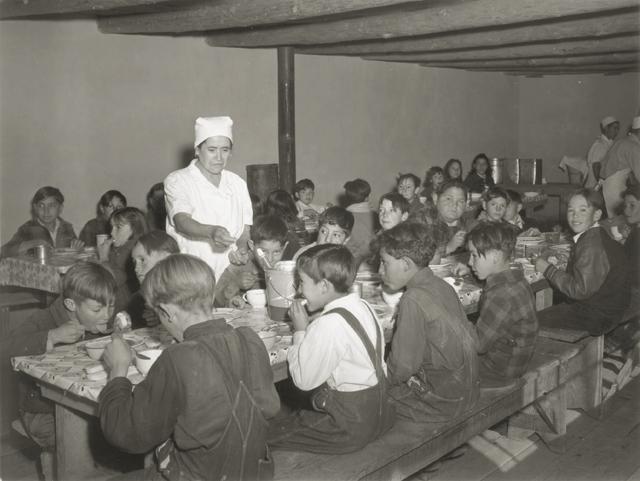
Breaking Cultural Barriers in the Classroom
Early History
Discriminación
Mexican Americans, like other peoples of color, have endured centuries of discrimination in the United States. Mexican people descend from diverse non-white and mixed native populations, thus racial definition is fluid. The opening of the Santa Fe Trail, annexation of Texas, and California Gold Rush and the treaty of Guadalupe Hidlago all played a role in extensive territorial expansions that led to the marginalization of the local Chicano populations.
“Politically, socially, and economically the status of elite Californios, Tejanos, and Hispanos eroded during this period, affecting the ability of the former Mexican citizens to shape and maintain a culturally and linguistically compatible form of public schooling for their children.” ~Victoria-María MacDonald
"The story of Latino-American discrimination largely begins in 1848, when the United States won the Mexican American War. The Treaty of Guadalupe Hidalgo, which marked the war’s end, granted 55 percent of Mexican territory to the United States. With that land came new citizens. The Mexicans who decided to stay in what was now U.S. territory were granted citizenship and the country gained a considerable Mexican-American population."
~Erin Blakemore

"Mapa de los Estados Unidos de Méjico by John Disturnell, the 1847
"School segregation, lynchings and mass deportations of Spanish-speaking U.S. citizens are just some of the injustices Latinos have faced."~ Erin Blakemore
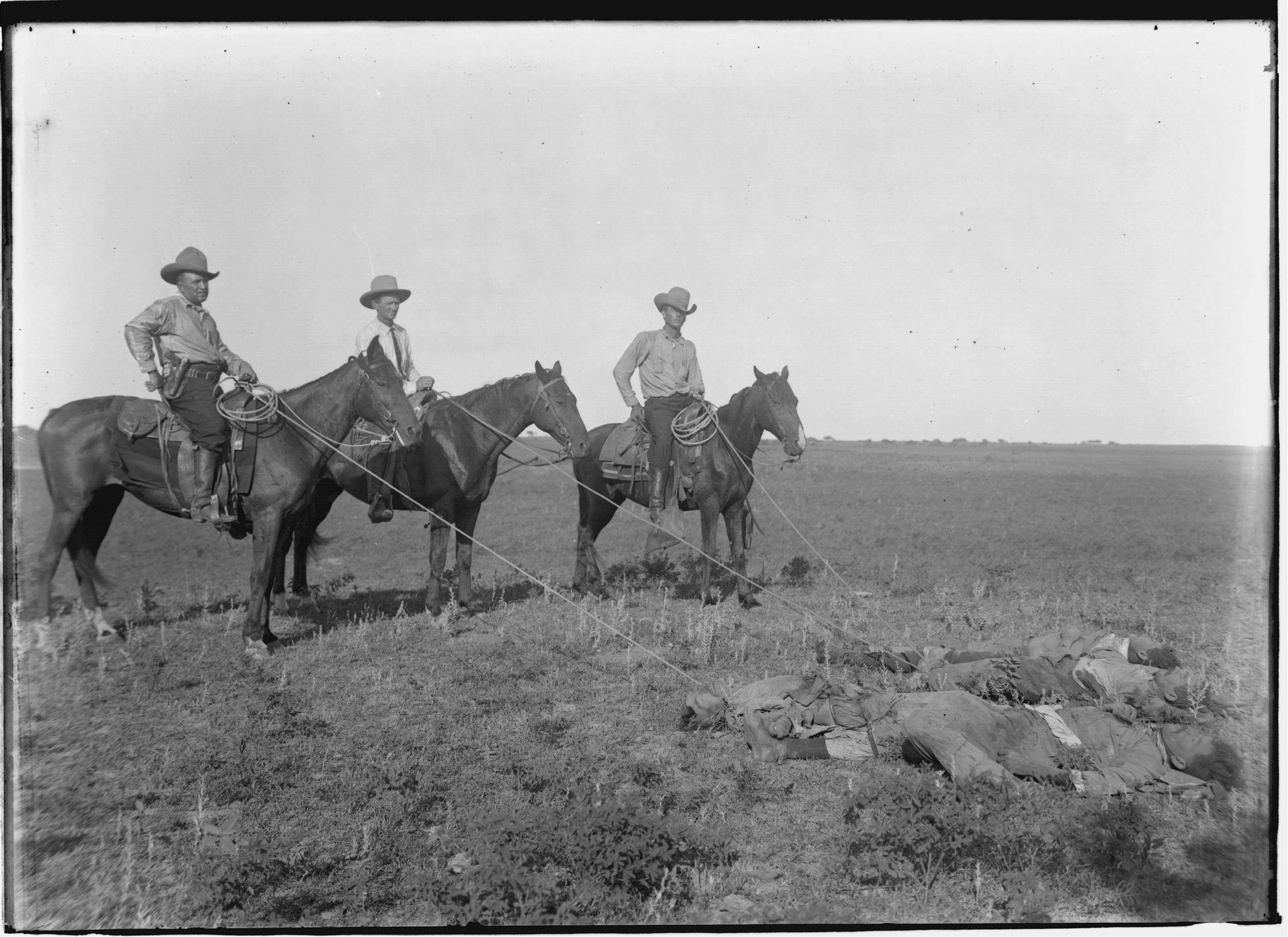
"Texas Rangers on the King Ranch in South Texas in 1915 with lassoes pulled around the bodies of Jesús García, Mauricio García and Amado Muñoz." The University of Texas at Austin
The roots of the Chicano Education Reform began alongside the school desegregation battles being wage by African Americans in the 1940s, 50s, and 60s. The Mendez v. Westminster (1947) case challenged school segregation of Mexican American students. Soledad Vidaurri successfully registered her children at West Minster Elementry in CA but her brother Gonzalo Mendez’s children were denied and sent to the “Mexican School.” The courts sided with The families and set precedent for the Brown V Board of Education case six years later. The 1960s Civil Rights Era set the stage for a larger, united Chicano Right movement.

"During the Great Depression, purposeful campaigns to repatriate Mexican Americans, many of whom were U.S. citizens, to Mexico strained the already difficult circumstances of Mexican Americans. As the "common" or public school idea moved West in the 1840s and 1850s, its role as an assimilationist institution clashed with the values of the former Mexican citizens who viewed their Spanish language, land, and citizenship as rights protected through the 1848 Treaty of Guadalupe Hidalgo."~Victoria-María MacDonald
El Movimiento
Farmerworkers
The farmworker rights movement, led by Cesar Chaves and Dolores Huerta challenged discriminatory employment practices against farmworkers who were grossly underpaid and lacked basic human rights protections. Stemming from the WWII Era Bracero program, a primarily poor Mexican and Mexican Americans picked most American crops by the1950s. Chavez joined a Community Service Organization in 1952 to help fight for civil rights and by 1967, he led a 340-mile march from Delano, CA to Sacramento, CA, and successfully organized a national grape strike to bring awareness to the plight of farmworkers. During these events, the term Chicano was coined and the unified activism motivated education activism.
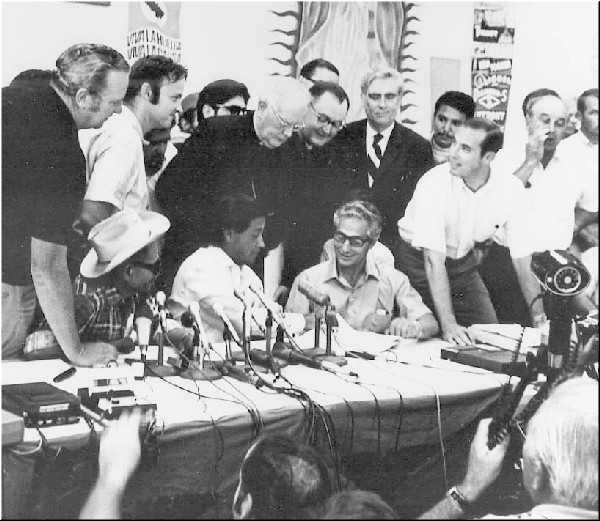
Courtesy of United Farm Worker.
“Cesar made people aware of the struggles of farm workers for better pay and safer working conditions. He succeeded through nonviolent tactics (boycotts, pickets, and strikes). Cesar Chavez and the union sought recognition of the importance and dignity of all farm workers. It was the beginning of La Causa a cause that was supported by organized labor, religious groups, minorities, and students. Cesar Chavez had the foresight to train his union workers and then to send many of them into the cities where they were to use the boycott and picket as their weapon.”
~ United Farm Workers, ¡Si, Se Puede!
State and federal governments failed to understand or protect boundaries of communal land rights included in the provisions of the treaty of Guadalupe Hidalgo. Chicano activism took on a controversial stand across the Southwest, culminating in a dispute the endangered support the Chicano movement. In 1963 Reis Tijerina, a Texan who had been influenced by the Black Power movement relocated to Tierra Amarilla, New Mexico.
"Tijerina founded La Alianza Federal de Mercedes, or the Federal Alliance of Land Grants, in 1963 with the mission of returning Spanish land grants to their rightful owners. By the middle of the decade, the group boasted 20,000 members. La Alianza organized direct actions in legal arenas before moving on to more radical tactics, like taking over the U.S. Forest Service-owned Echo Amphitheater outside of Abiquiú, declaring a republic, electing officials, putting forest rangers on trial and occupying the ground for five days with nearly 300 people."~ Jesse Moya and Cody Hooks
Tijerina and La Alianza launched a raid on the Río Arriba County Courthouse that resulted in kidnapping, a shootout, death of an officer and a week-long manhunt. The press coverage united many but it also led to a more unified identity.
Land Rights
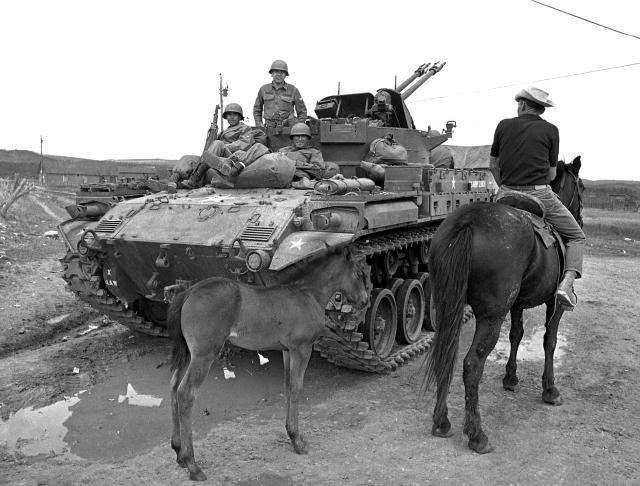
National Guard searching for suspects in Tierra Amarilla raid.
Courtesy of liberation.org
"It was a time of great anger and confusion," said Larry Torres, University of New Mexico-Taos Chicano history professor. "We had lived under a delusion in Northern New Mexico that we were pure Spanish blood. ... The Chicanos said, 'No, you're also Native.' It was an identity crisis." ~ Jesse Moya and Cody Hooks
Demonstration of Chicano Reform
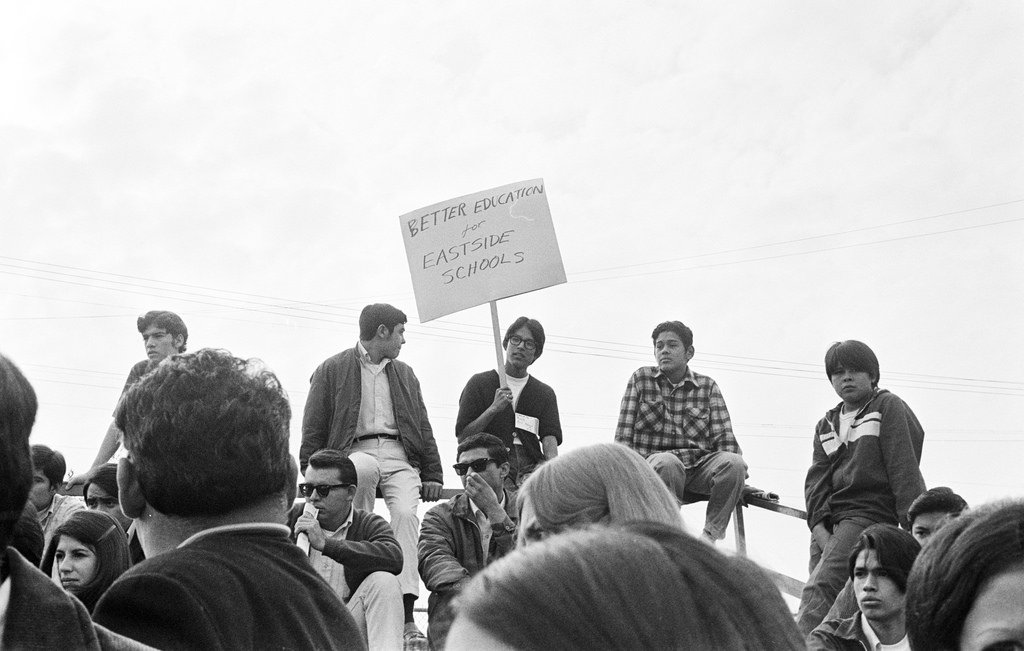
Students protesting in L.A. Walkout
Courtesy of United Way
During the Chicano Education Reform different schools and communities protested for a better way of education. One of the most frequent types of protesting was school walkouts. All Chicanos in school would walk out and protest for better education for themselves and representation in administrators and teachers. The most well known walk out in the U.S. was the L.A. walkout at Garfield High School along with 6 other high schools. On March 6th, 1968 an estimated 15,000 Chicano students walked out of school and protested for better education, after the walk out the students went to the school board and made a list of demands after the protest. Regarding facilities, student rights, administrators and academics that were ultimately denied by the board.
"While not as heavily excluded from economic and social integration as African Americans, Mexican origin persons have encountered severe racial barriers, which have structured opportunities for them. These scholars argue that Mexican Americans lag educationally and economically even after several generations in the United States, as a result of this treatment. They have been thus limited to mostly working class jobs and from successfully integrating into middle class society.."
~ Robert Heinlein